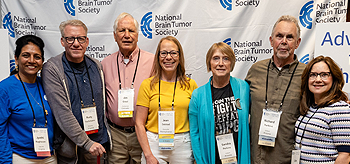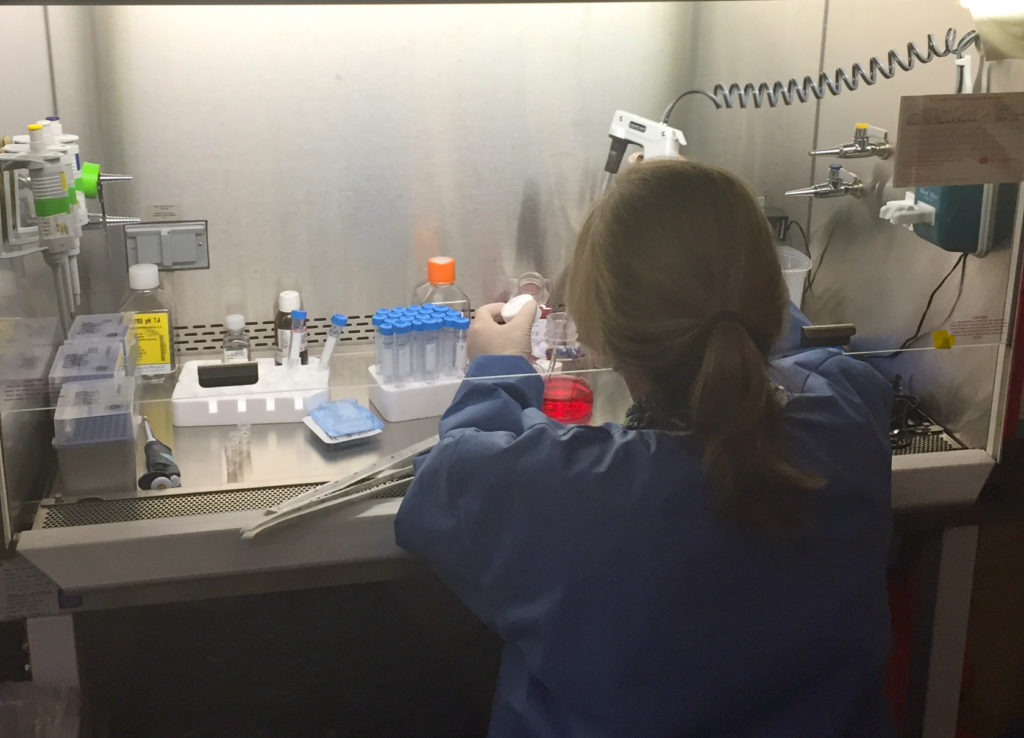Since the news program “60 Minutes” first aired two segments in March 2015 focused on an early-phase clinical trial taking place at Duke University, a lot of excitement has been generated about the investigational treatment highlighted: PVS-RIPO – more commonly referred to as the re-engineered poliovirus.
The excitement was well-warranted, as the results reported at the time showed that, out of 24 recurrent glioblastoma (GBM) patients who had been treated with PVS-RIPO, there were three long-term survivors (patients still alive 22, 34, and 35 months after treatment), and two patients that had experienced such great response to the therapy that they could be declared “disease free.” Further, 11 more patients were cited as doing well with no disease progression, and one more who had disease progression but was still alive. Twelve patients had died.
Overall, this early analysis demonstrated that patients receiving PVS-RIPO were living longer than is typically expected for GBM patients, for whom prognoses are dire.
Since that time, Duke has continued their clinical development of PVS-RIPO. After the “60 Minutes” piece aired, they added 26 more patients to an expanded Phase 1 clinical trial. It is now being reported that, of the 23 patients who received an “optimal” dose of the treatment (a Phase 1 trial’s primary goal is to increase dose levels in patients until a maximum tolerated and safe dosage range is found), 15 are still alive.
Because of these further encouraging results, the U.S. Food and Drug Administration (FDA) has granted Duke what is known as “Breakthrough Therapy Designation.”
This is certainly more positive news, as another, potentially more effective, treatment option moves further through the drug development and evaluation process toward approval.
However, despite some, unfortunately misleading headlines, this does not yet mean – or guarantee – that PVS-RIPO is approved for all recurrent GBM patients. This has still to be determined through further clinical trial evaluation and final review and approval by the FDA.
So what does this news mean?
The Breakthrough Therapy Designation was created through legislation in 2012 that NBTS advocated for along with a coalition of other disease groups led by Friends of Cancer Research, to help promising treatments get through the FDA evaluation and approval process faster.
Specifically, the designation, “is intended to expedite the development and review of drugs for serious or life-threatening conditions. The criteria for breakthrough therapy designation require preliminary clinical evidence that demonstrates the drug may have substantial improvement on at least one clinically significant endpoint over available therapy.”
A breakthrough therapy designation allows a drug’s sponsor to have access to all of the FDA’s “fast track program” benefits, including, according to the FDA’s website, “more intensive FDA guidance on an efficient drug development program, an organizational commitment involving senior managers, and eligibility for rolling review and priority review.” This may include:
- Holding meetings with the sponsor and the review team throughout the development of the drug,
- Providing timely advice to, and interactive communication with, the sponsor regarding the development of the drug to ensure that the development program to gather the nonclinical and clinical data necessary for approval is as efficient as practicable,
- Taking steps to ensure that the design of the clinical trials is as efficient as practicable, when scientifically appropriate, such as by minimizing the number of patients exposed to a potentially less efficacious treatment,
- Assigning a cross-disciplinary project lead for the FDA review team to facilitate an efficient review of the development program and to serve as a scientific liaison between the cross-discipline members of the review team (i.e., clinical, pharmacology-toxicology, chemistry, manufacturing and control, compliance) for coordinated internal interactions and communications with the sponsor through the review division’s Regulatory Health Project Manager, and,
- Involving senior managers and experienced review staff, as appropriate, in a collaborative, cross-disciplinary review.
In short, if a drug is granted “breakthrough therapy” status, the FDA will expedite the review of the potential therapy. But, again, it does not guarantee approval. For example, according to a database on breakthrough therapies kept by Friends of Cancer Research, out of 115 treatments that have been designated as “Breakthrough Therapies” since late 2012, only 39 have been approved as of yet. Therefore, while there is much reason to be hopeful, we can’t count our chickens yet.
Where does PVS-RIPO go from here? What does NBTS think of this news?
Duke is looking to move this clinical trial forward fairly quickly to a Phase II/III. You can find more specific information on the trial on Duke’s brain tumor center’s website. Additionally, tune in this Sunday night at 7:00PM to CBS to catch an update on “60 Minutes” from their episode last year, which will include information on this new development.
(UPDATE: if you missed the segment you can watch it now.)
Finally, there are a couple of important points NBTS wants to stress here:
- We congratulate the Duke team on the advancement of this research. NBTS was one of the earlier funders of the work that led to the discovery of this therapy, and we remain close to many of the great researchers and doctors at Duke who are part of this effort, including Drs. John Sampson and Darell Bigner, both of whom have received funding from NBTS previously. In fact, Dr. Bigner was the 2014 recipient of the National Brain Tumor Society’s Feldman Founders Award for his decades of outstanding contributions and invaluable impact on the field of brain tumor research. (You can watch Dr. Bigner’s acceptance speech.) Dr. Bigner is also a member of the National Brain Tumor Society’s Strategic Scientific Advisory Council for our Defeat GBM Research Collaborative.
- We are very pleased to see the FDA grant breakthrough therapy status because it will mean an all hands on deck review of the safety and efficacy of PVS-RIPO.
- We are excited that this oncolytic virus approach is worthy of such status so that the FDA will do a faster review of this treatment approach when ready. An expedited review is important for the patients and families who want better treatments as soon as possible.
- While we are hopeful that this approach demonstrates the extension of survival beyond current therapies, we are mindful that we must continue research on many fronts including bringing new discoveries forward toward clinical trials such as we are doing in our flagship research program Defeat GBM.
As always, we’ll keep the community updated as any more news and information become available.



